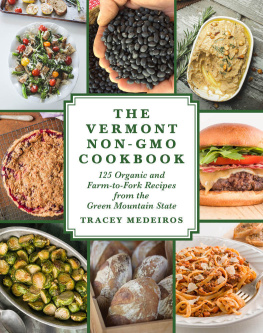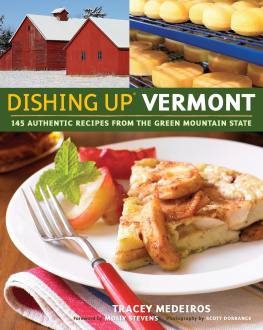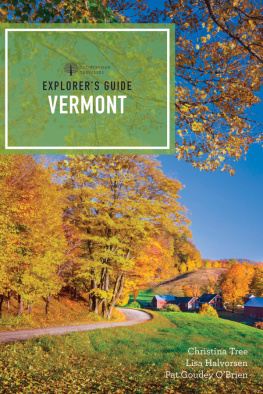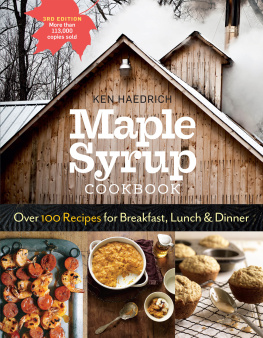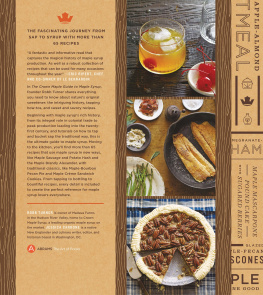M is for Maple Syrup
A Vermont Alphabet
From the Algonquins, Green Mountain Boys, and Zerah Colburn, to Ben & Jerrys, M is for Maple Syrup is a book for all Vermonters. The rhymes and text woven through A to Z teach children about the many wonders of the 14th state. Open the pages and explore Lake Champlain, The Kingdom, and Vermonts many challenging ski areas.

With charming illustrations from artist Ginny Joyner, as well as playful rhymes and informative text from author Cynthia Furlong Reynolds, M is for Maple Syrup is sure to become a favorite of children, teachers, and parents. Rediscover the natural wonders and amazing history of Vermont through this delightful alphabet journey!

M is for Maple Syrup
A Vermont Alphabet

Written by Cynthia Furlong Reynolds Illustrated by Ginny Joyner

F is for Family and Friends:
To my husband, my children,
and the Stanleys of Franklin and South Burlington, Vermont,
and to friends all around the country
who have encouraged me through the years.
My love, and many thanks!
CINDY
L is for my daughter Lucie,
my biggest fan and a great artist herself.
C is for Charlie,
an angel in wolfs clothing.
And F is for my big family,
who will probably buy lots of copies of this book.
GINNY

A
In 1789, Vermont schoolteacher Justin Morgan received a colt as payment for a debt. Little did he know that he would get far more than he bargained for! That stallion died at the age of 29 after launching Americas only native line of horses. The Morgan is our state animal.
Known for their stamina, speed, and sweet dispositions, Morgans are outstanding saddle horses and equally good at pulling farm equipment. Their bodies are deep and short-backed, with thin legs and heads held high. When fully grown, they stand between 58 and 62 inches at the shoulders and weigh between 800 and 1,200 pounds. The Tennessee walking horse and American saddle horse are Morgan relatives.
You can see these horses at the University of Vermonts Morgan Horse Farm in Middlebury.
Alphabet and Animal begin with A.
Our state animal says neigh-neigh!
He wears four shoes and nibbles fresh green hay.
Watch him trot and gallop on a brilliant autumn day.

B
The covered bridge is a product of two important Yankee characteristics: ingenuity (which means imagination) and thrift (spending money wisely). The roofs protect the wooden supports and floors from decay; the sides carry the weight of the floor and roof. At one time, covered bridges were called kissing bridges because a man could steal a kiss from a lady in his carriage or sleigh when they passed through the bridge.
Vermont has 100 covered bridges, most of them still in use. The smallest are 40 feet long. The longest (crossing from Windsor to Cornish, New Hampshire) is 465 feet long. The oldest is Middleburys Pulp Mill Bridge, built between 1808 and 1820. The newest appeared in Woodstock in 1981. The bridge at Wolcott is the only covered railroad bridge still used in our country today.
Bridge begins with the letter B.
Bridges cross rivers worry-free.
Dont close your eyes or you will miss drivers on covered bridges stealing a kiss!

C
Our capital city, Montpelier, was settled on the Winooski and North Branch rivers in 1787.
During the American Revolution, Vermont was an independent republic, with its own laws, money, and government. In 1791, Vermont joined the Union as the 14th state. Montpelier became the capital in 1805.
Constitution is another important C word. A constitution is a set of laws that govern and protect the people. Vermonts constitution created a government with three parts: a governor, Supreme Court (with five judges called justices); and the General Assembly (which has two parts, with 30 senators and 150 representatives.) Our 1777 constitution was the first in the United States to outlaw slavery and give all adult males the right to vote.
Capital comes with the letter C.
Here laws are made to keep us free.
On the banks of two rivers, sitting pretty, Montpelier is our capital city.

D
Vermonts state drink is milk, which comes from the cows and goats raised on Vermonts dairy farms. Onequarter of Vermonts 6,900 farms are dairy farms; most of them lie in the river valleys up north. They produce more than two billion gallons of milk each year. Thanks to our dairy farmers, we have milk to drink and pour on our cereal, cheese for sandwiches, butter for bread, yogurt, cream, and, of course, mouth-watering ice cream.
Vermont farms provide milk for New England and cheese for sale all over the world. There are many dairy farms open to the public. One is Shelburne Farms, which sits on 1,400 acres outside Burlington.
D is for Dairy, a Vermont farm that is legendary.
Here, cows and goats are necessary because making milk is customary.

E
On May 10, 1775, Ethan Allen and his Green Mountain Boys surprised the British commander at Fort Ticonderoga while he and his troops were sleeping. Ethan Allen demanded the surrender of the fort overlooking Lake Champlain in the name of the Great Jehovah and the Continental Congress. With the fort they captured cannons and mortars that were later sent to Boston where they were used for the Battle of Bunker Hill. These cannons and mortars played a big part in forcing the British to leave Boston Harbor.
Born in Litchfield, Connecticut in 1738, Ethan Allen became a legendary frontiersman. He moved to the New Hampshire Grants (now Vermont) in 1768 and, with his five brothers, joined a band of freedom fighters called the Green Mountain Boys. After capturing Fort Ticonderoga, Ethan Allen joined the American army. He wrote about his adventures in A Narrative of Colonel Ethan Allens Captivity. He died in 1789, in Burlington. You can tour his home there.
Ethan Allen begins with E.
He fought the British so we could be free.
Ethan Allen and the Green Mountain Boys captured a fort without making noise.




